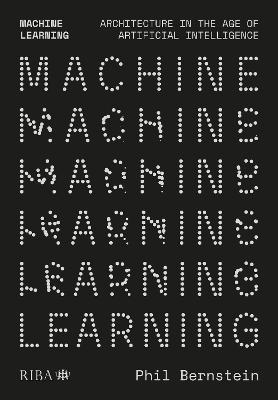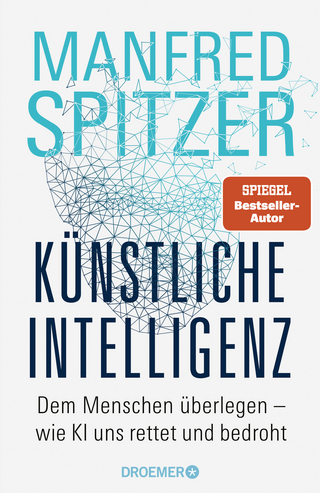
Machine Learning
RIBA Publishing (Verlag)
978-1-914124-01-3 (ISBN)
Practices must stay abreast of new developments in AI or risk being left
behind. Architecture's best-known technologist, Phil Bernstein, provides a
strategy for long-term success.
‘The advent of machine learning-based AI systems demands
that our industry does not just share toys, but builds a new sandbox in which
to play with them.’ - Phil Bernstein
The profession is changing. A new era is rapidly approaching
when computers will not merely be instruments for data creation, manipulation
and management, but, empowered by artificial intelligence, they will become
agents of design themselves. Architects need a strategy for facing the opportunities
and threats of these emergent capabilities or risk being left behind.
Architecture’s best-known technologist, Phil Bernstein,
provides that strategy. Divided into three key sections – Process,
Relationships and Results – Machine Learning lays out an approach for
anticipating, understanding and managing a world in which computers often
augment, but may well also supplant, knowledge workers like architects. Armed with
this insight, practices can take full advantage of the new technologies to
future-proof their business.
Features chapters on:
·
Professionalism
·
Tools and technologies
·
Laws, policy and risk
·
Delivery, means and methods
·
Creating, consuming and curating data
·
Value propositions and business models.
Phil Bernstein is an architect and technologist who is an Associate Dean and Professor, Adjunct at the Yale School of Architecture where he has been a member of the faculty since 1988. Prior to his current full-time role at Yale he was a vice president at Autodesk, where he helped develop and execute the company strategy that resulted in Building Information Modelling. Prior to Autodesk he was a principal at Pelli Clarke Pelli Architects. He is the author of Architecture Design Data: Practice Competency in the Era of Computation, and co-author of Building (In) the Future: Recasting Labor in Architecture and Goat Rodeo: Practicing Built Environments. He writes, lectures, and consults extensively on the implications of technology on architectural practice.
Acknowledgments
Introduction
Foreword by Mark Greaves
1 - PROCESS
1.1 Tools
and technologies
1.2 - What is
AI?
1.3 Professional
Information and Knowledge
1.4 AI and
Process Transformation in Design, and Beyond
1.5 Scopes of
Service
1.6 Delivery, Means and Methods
2 -
RELATIONSHIPS
2.1
Economics
2.2 Laws, Policy, and Risk
2.3
Professionalism
2.4 Education, Certification, and
Training
3 - RESULTS
3.1
Objectives of design
3.2 Creating,
Consuming and Curating Data
3.3 Tasks,
Automation
3.4 Labour of
Design
3.5 Value
Propositions and Business Models
Index
Bibliography
| Erscheinungsdatum | 03.05.2022 |
|---|---|
| Verlagsort | London |
| Sprache | englisch |
| Maße | 167 x 240 mm |
| Themenwelt | Informatik ► Theorie / Studium ► Künstliche Intelligenz / Robotik |
| Technik ► Architektur | |
| ISBN-10 | 1-914124-01-4 / 1914124014 |
| ISBN-13 | 978-1-914124-01-3 / 9781914124013 |
| Zustand | Neuware |
| Haben Sie eine Frage zum Produkt? |
aus dem Bereich


